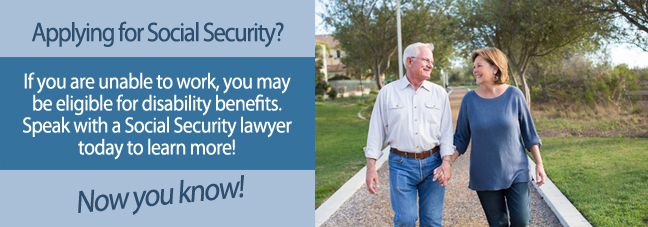If you suffer from a medical condition or injury that prevents you from working, you may be able to receive Social Security Disability (SSD) benefits through the Social Security Administration (SSA) to help cover the costs of your everyday living expenses. A medical vocational allowance is one of the ways you can qualify for these benefits.
The SSA has a manual, called the Blue Book, which contains a list of medical conditions that are used to evaluate whether or not you qualify for SSD benefits. A lot of people who receive SSD benefits do not exactly match one of the conditions listed in the Blue Book. If your medical condition does not match a listing, but you are still seriously disabled and unable to perform any type of work, you may still qualify for disability benefits under a “medical vocational allowance”.
What Are The SSA's Disability Benefit Programs?
The Social Security Administration (SSA) runs two disability benefits programs that offer financial assistance to those with a disability(s) that need the money. These two programs are called Social Secu rity Disability Insurance (SSDI) and Supplemental Security Income (SSI). SSI is financial-need based while SSDI requires a certain number of work credits. More specifically, SSDI is designed for people who were employed and able to work full time, at one point in time, but are no longer able to work due to a serious ailment or disability. SSI is designed for people with serious ailments or severe disabilities who also have very limited resources and income.
rity Disability Insurance (SSDI) and Supplemental Security Income (SSI). SSI is financial-need based while SSDI requires a certain number of work credits. More specifically, SSDI is designed for people who were employed and able to work full time, at one point in time, but are no longer able to work due to a serious ailment or disability. SSI is designed for people with serious ailments or severe disabilities who also have very limited resources and income.
Utilizing a listed medical condition or impairment, the SSA strives to establish eligibility for SSD benefits. Conditions that are deemed as potentially disabling are listed in the SSA’s manual used to evaluate medical conditions that are governed by strict guidelines. Once again, this manual is called the Blue Book. While the Blue Book has many conditions listed, not all are. As such, if you have a medical condition that is not listed in, or does not meet the specific requirements exactly as they are listed in, the Blue Book, the SSA is still required to look more closely at your disability benefits application and the documentation you provide along with it.
In fact, the majority of people who ultimately get approved to receive SSD benefits do not have a medical condition that perfectly matches a Blue Book listing’s requirements. And, most of these individuals do not come anywhere near enduring the Blue Book listing’s extremely severe symptoms. And this is precisely where a Medical Vocational Allowance comes into the picture. Now, you may be asking what is a Medical Vocational Allowance? Let us explain.
What Is A Medical Vocational Allowance?
So, what is a Medical Vocational Allowance? A medical vocational allowance is the term used by the SSA to describe the  situation in which you have a disability that has made you unable to work, and thereby hinders your life, but doesn’t meet the strict criteria of the Blue Book. In other words, a medical vocational allowance is a way through which disability applicants are able to prove to the SSA that they are unable to work full-time (i.e., engage in substantial gainful activity), and, thereby, are not able to make a living because of their disability (condition(s)), education, age, experience, etc. despite the fact that they do not meet the Blue Book’s specific criteria.
situation in which you have a disability that has made you unable to work, and thereby hinders your life, but doesn’t meet the strict criteria of the Blue Book. In other words, a medical vocational allowance is a way through which disability applicants are able to prove to the SSA that they are unable to work full-time (i.e., engage in substantial gainful activity), and, thereby, are not able to make a living because of their disability (condition(s)), education, age, experience, etc. despite the fact that they do not meet the Blue Book’s specific criteria.
In the eyes of the SSA, your working ability involves (1) whether you are able to work any of your previous jobs, and (2) whether or not you are able to conduct any other type(s) of work or job(s) with your disability or condition.
A medical vocational allowance includes a thorough review of your medical records. The SSA will also determine the type of work, if any, that you are reasonably able to perform with your disability, which is also known as your “Residual Functional Capacity” (RFC).
 If the SSA rules that you are unable to perform any type of job with your medical condition, even though you do not meet a listing in the Blue Book, you can be approved for SSD benefits under a medical vocational allowance.
If the SSA rules that you are unable to perform any type of job with your medical condition, even though you do not meet a listing in the Blue Book, you can be approved for SSD benefits under a medical vocational allowance.
If you are applying for disability benefits and worry that you do not meet one of the SSA’s exact listings, you should consider getting help from either a disability advocate or an attorney who can help you prepare your application and included materials.